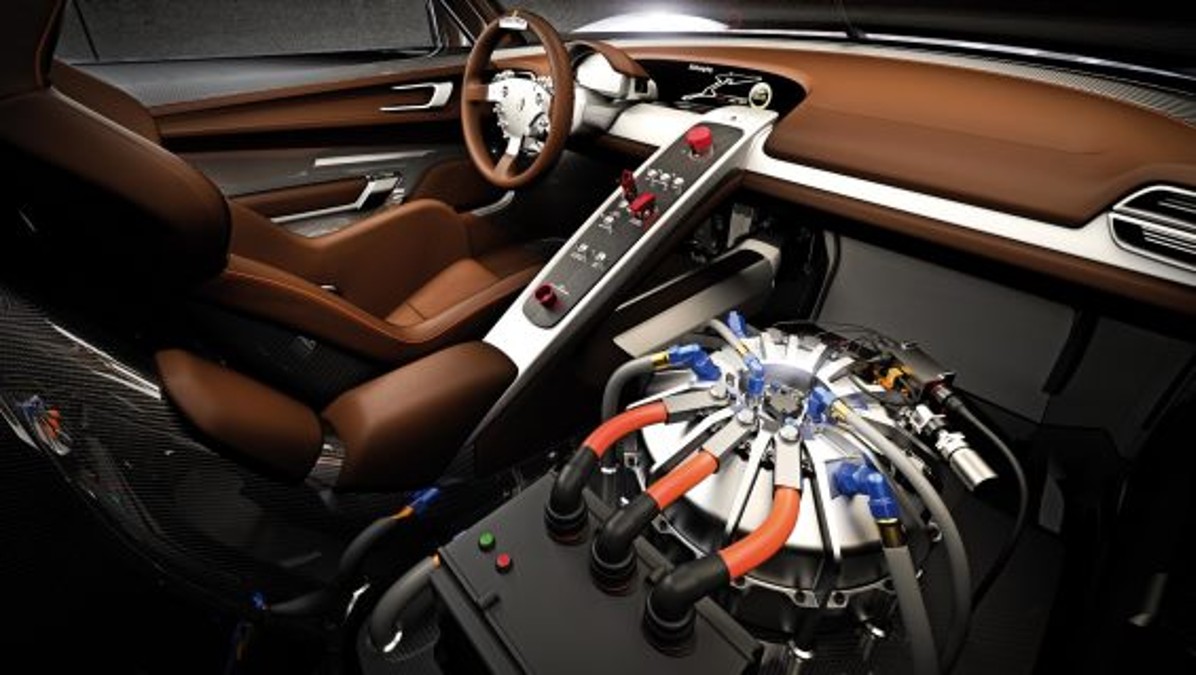Flywheels store and immediately re-release kinetic energy; this is ideal if large amounts of energy are needed very quickly. Vacuum processes make this technology more efficient.
All children are familiar with the physical principle of winding up a toy car by dragging its wheels along the ground two or three times and then letting it go, allowing it to drive off humming, driven by a flywheel. When the child's hand pushes the car, it causes a small metal disc connected to the wheels to rotate quickly. The rotational energy of just a few grams of sheet metal is enough for a race held in a playroom.
Vacuum processes optimize running performance
But the flywheel is much more than just a toy. Among other modern-day applications, flywheels are used to buffer fluctuations in mains power supply and temporarily store braking energy. A vacuum is often applied to make the use of flywheel technology more efficient, because, as the number of rotations and rotational speed increase, so do the effects of drag and air turbulence. These significantly reduce the performance of the rotational storage device by decelerating it, and can even destroy advanced plastic flywheels through the formation of frictional heat. This is prevented if the wheel rotates in encapsulated housing, where it is subject to a high vacuum and no air resistance. This also minimizes inevitable energy loss when idling and increases the efficiency of the flywheel.
Magnetic bearings rather than conventional ball bearings are also increasingly used for the rotation axis, in order to keep friction losses to a minimum. As a result, the wheel axle floats in a magnetic field and turns without friction.
Small and robust
The flywheel stores the energy in a moving body, and conventional flywheels are therefore usually made out of metal, making them rather heavy. The limiting factor is what is known as the circumferential speed, i.e. the speed at which the outer edge of the wheel rotates. As the speed increases, so does the centrifugal force; eventually, the material reaches its limit and may burst. The trend is therefore moving toward high-strength carbon fibre materials for flywheels, as these do not require a large mass.
The energy content of a rotating mass increases by the square of the rotational speed. This means that the ability to store energy can be more effectively increased with faster rotation than with heavier or larger discs. Fibre-reinforced plastics are light and their strength enables them to withstand extremely fast rotation, with the potential of up to 100,000 rotations per minute.

Immediate energy
Vacuum processes increase the efficiency of flywheels
-

Flywheel generator in vacuum chamber in the Porsche 918 RSR
Tried and trusted technology
The principle of the flywheel as immediate storage for kinetic energy is used in a variety of applications. It serves as a drive mechanism for potter's wheels in Classical times, for steam engines during the industrial revolution, and in modern race cars. FIA rules permit the use of flywheel energy storage that charges during braking and discharges again during acceleration. In Le Mans in 2012, two Audi R18 e-tron quattro cars with flywheel energy storage even won first and second place during the 24-hour race.
However, today flywheels are normally used as a drive for generators to buffer mains fluctuations. Ninety seven percent of all grid disturbances last under three seconds – nowhere near long enough to bring a diesel-driven emergency unit to the required speed. In contrast, the energy of the flywheel generator is available within milliseconds. It compensates for brief mains fluctuations and serves as a buffer until the emergency power device can begin operation.
The principle of the flywheel as immediate storage for kinetic energy is used in a variety of applications. It serves as a drive mechanism for potter's wheels in Classical times, for steam engines during the industrial revolution, and in modern race cars. FIA rules permit the use of flywheel energy storage that charges during braking and discharges again during acceleration. In Le Mans in 2012, two Audi R18 e-tron quattro cars with flywheel energy storage even won first and second place during the 24-hour race.
However, today flywheels are normally used as a drive for generators to buffer mains fluctuations. Ninety seven percent of all grid disturbances last under three seconds – nowhere near long enough to bring a diesel-driven emergency unit to the required speed. In contrast, the energy of the flywheel generator is available within milliseconds. It compensates for brief mains fluctuations and serves as a buffer until the emergency power device can begin operation.
Why does the Max Planck Institute need a flywheel?
High power for fusion experiments
The high performance of flywheel generators is also specifically used to quickly access large amounts of energy, for example, for the ASDEX Upgrade fusion experiment at the Max Planck Institute for plasma physics in Garching, Germany. There, a 400-tonne flywheel is accelerated to 3,000 rotations per minute. It then supplies 150 MW of power for 10 seconds to heat up the plasma.
Three times the speed of sound
The carbon fibre flywheel that was developed for motorsports is 30 millimetres in diameter, and achieves 60,000 rotations. This means it reaches three times the speed of sound at its outer edge. The flywheel rotates in a vacuum within a sealed chamber, and power is transmitted using magnetic coupling.
High power for fusion experiments
The high performance of flywheel generators is also specifically used to quickly access large amounts of energy, for example, for the ASDEX Upgrade fusion experiment at the Max Planck Institute for plasma physics in Garching, Germany. There, a 400-tonne flywheel is accelerated to 3,000 rotations per minute. It then supplies 150 MW of power for 10 seconds to heat up the plasma.
Three times the speed of sound
The carbon fibre flywheel that was developed for motorsports is 30 millimetres in diameter, and achieves 60,000 rotations. This means it reaches three times the speed of sound at its outer edge. The flywheel rotates in a vacuum within a sealed chamber, and power is transmitted using magnetic coupling.